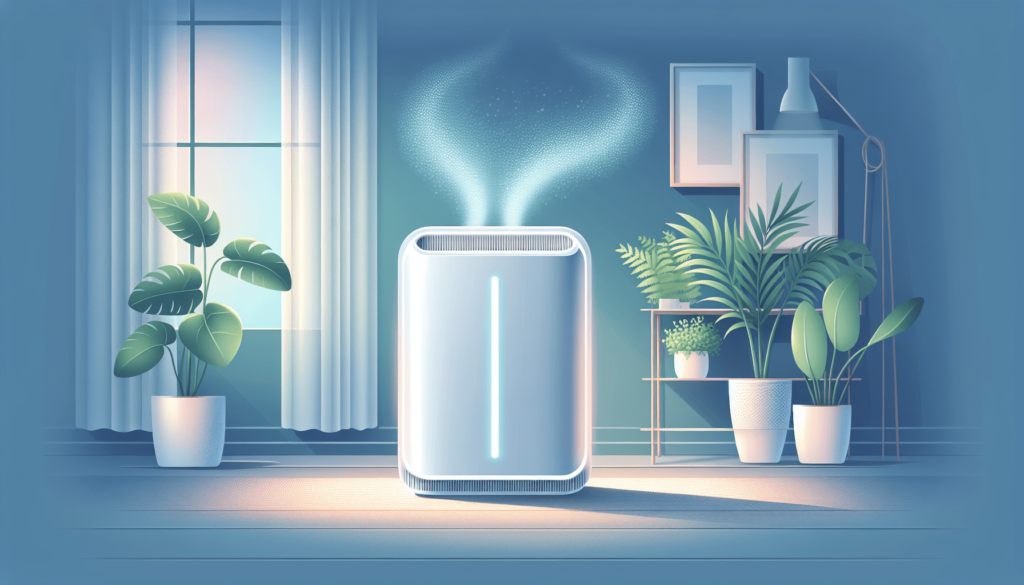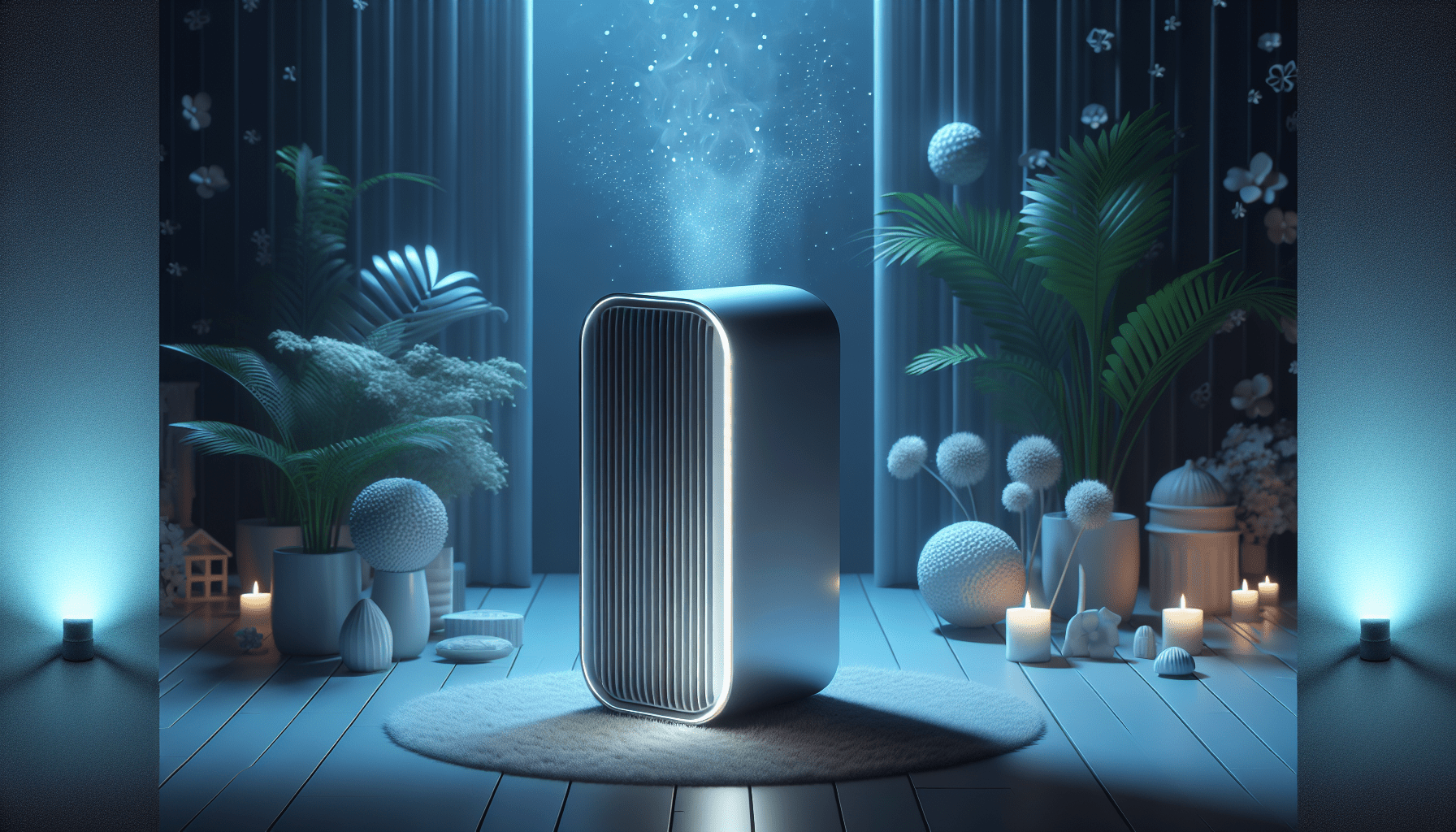Are you curious to know how often you should run an air purifier? The answer to this question may vary depending on your specific needs and circumstances. In this article, we will explore different factors that can help you determine the ideal usage frequency for your air purifier. From the size of your room to the level of air pollution, we will guide you through the key considerations to ensure that you achieve the optimal air quality in your living space. So, keep reading to discover the best practices for running an air purifier and maximize its benefits for you and your loved ones.
Factors to Consider
When it comes to choosing an air purifier, there are several factors that you should consider to ensure that you make the right decision. These factors include the size of the room, the quality of indoor air, your health conditions, the presence of allergens, and the type of air purifier that suits your needs.
Size of the Room
The size of the room plays a crucial role in determining the effectiveness of an air purifier. A larger room may require a more powerful air purifier with a higher coverage area, while a smaller room may benefit from a compact and portable unit. To determine the size of the room, measure the length and width, and multiply these dimensions to get the square footage.
Quality of Indoor Air
Monitoring the quality of indoor air is essential to understand the pollutants and allergens present. Factors such as smell or odor, dust and particles, and the presence of allergens like pollen can significantly impact the air quality. An air purifier should be able to address these issues effectively, ensuring that you breathe clean and fresh air.
Health Conditions
If you or anyone in your household has specific health conditions, it’s crucial to consider them when choosing an air purifier. Certain respiratory issues such as asthma or allergies may require a purifier with specialized filters to capture allergens and pollutants effectively. Additionally, individuals with weakened immune systems may benefit from an air purifier that can eliminate harmful bacteria and viruses from the air.
Presence of Allergens
Identifying the presence of allergens in your surroundings is essential, as different air purifiers are designed to target specific allergens. Seasonal allergens like pollen, pet allergens, dust mites, and mold can all affect indoor air quality. Look for an air purifier that is designed to combat these allergens effectively, ensuring a healthier environment for you and your loved ones.
Type of Air Purifier
There are various types of air purifiers available on the market, each with its own unique features and benefits. Understanding the different types can help you make an informed decision. HEPA filters are highly effective at capturing allergens and particles, while activated carbon filters are great for removing odors and chemicals. Ionic air purifiers release negative ions to neutralize pollutants, and UV-C light purifiers use ultraviolet light to eliminate bacteria and viruses. Ozone generators, on the other hand, should be approached with caution due to potential health risks.
Size of the Room
Determining the Room Size
To determine the size of the room, you can measure the length and width using a tape measure. Once you have these measurements, multiply them to calculate the square footage of the room. This will help you establish the size of the area that the air purifier needs to cover.
Air Purifier Coverage Area
Air purifiers have different coverage areas, which determine how effectively they can clean the air in your room. It’s important to choose an air purifier that can cover the square footage of your room to ensure maximum efficiency. Manufacturers typically provide this information in their product specifications, so be sure to check before making a purchase.
Calculating Air Changes per Hour (ACH)
Air changes per hour (ACH) is a measure of how many times an air purifier can filter and circulate the air within a room in one hour. A higher ACH indicates that the air purifier can clean the air more rapidly. To calculate the required ACH for your room, consider factors such as the presence of allergens, the size of the room, and any health conditions. It’s generally recommended to have at least 4 to 6 ACH for optimal air purification.
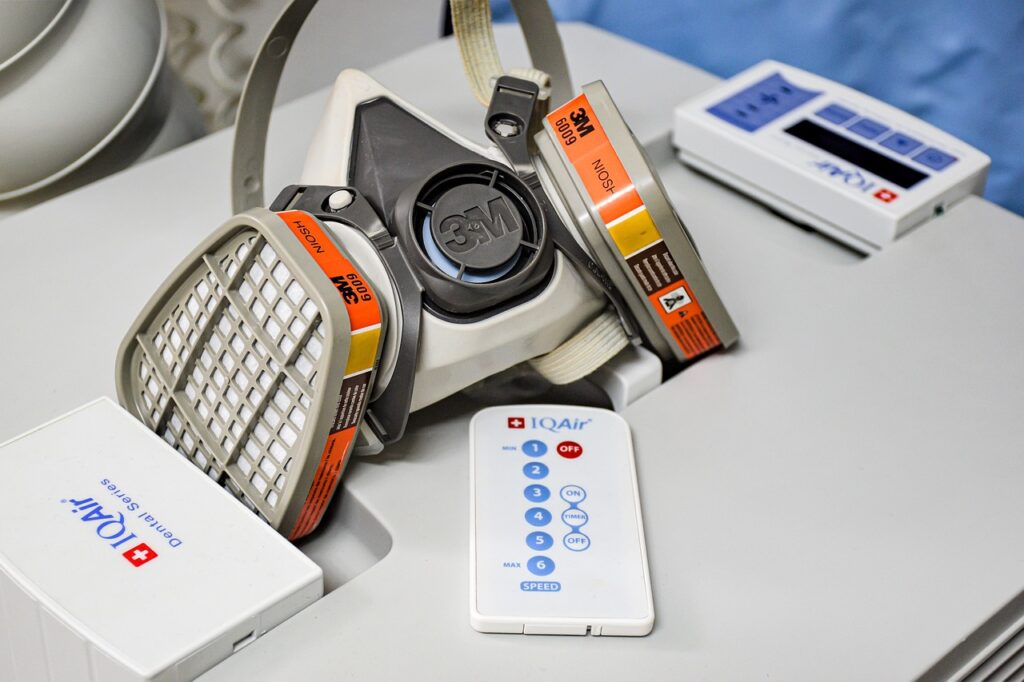
Quality of Indoor Air
Monitoring Indoor Air Quality
Monitoring indoor air quality is essential to determine the effectiveness of your air purifier and any improvements needed. There are various indoor air quality monitors available on the market that can measure the levels of pollutants, humidity, temperature, and other factors that affect the air you breathe. Regularly monitoring your indoor air quality can help you understand the effectiveness of your air purifier and take appropriate measures if necessary.
Smell or Odor
Unpleasant odors can significantly affect your comfort and well-being. An effective air purifier should be able to eliminate or reduce common household odors, such as cooking smells, pet odors, or musty odors. Look for air purifiers with activated carbon filters, as they are particularly effective at removing odors and chemicals from the air.
Dust and Particles
Dust and particles present in the air can exacerbate allergies and respiratory issues. An air purifier equipped with a HEPA filter is highly effective at capturing these small particles, ensuring cleaner air. Regularly vacuuming and dusting your room can also help minimize dust buildup and improve air quality.
Allergens and Pollen
For individuals with allergies, airborne allergens such as pollen can be particularly troublesome. An air purifier with a HEPA filter can effectively capture and remove allergens from the air, reducing symptoms and improving overall comfort. Consider an air purifier that is specifically designed to target allergens to ensure better indoor air quality.
Health Conditions
Respiratory Issues
If you or someone in your household suffers from respiratory issues such as asthma or chronic obstructive pulmonary disease (COPD), an air purifier can greatly improve the quality of life. Look for an air purifier with a HEPA filter, as it can effectively capture and remove particles that can trigger respiratory symptoms. Additionally, consider a purifier with a pre-filter to remove larger particles like dust and pet dander.
Allergies and Asthma
Allergies and asthma are common conditions that can be triggered by airborne allergens, including pollen, pet dander, and dust mites. An air purifier with a HEPA filter and an activated carbon filter can help alleviate symptoms by capturing these allergens and reducing their presence in the air. Additionally, consider regular cleaning and maintenance to minimize allergen buildup in your living space.
Weakened Immune System
If you have a weakened immune system, it’s important to prioritize clean and healthy air. An air purifier with a HEPA filter, UV-C light purifier, and an activated carbon filter can help eliminate harmful bacteria, viruses, and chemicals from the air, minimizing the risk of infections and respiratory illnesses. Regularly cleaning and maintaining the purifier will also contribute to a healthier environment.
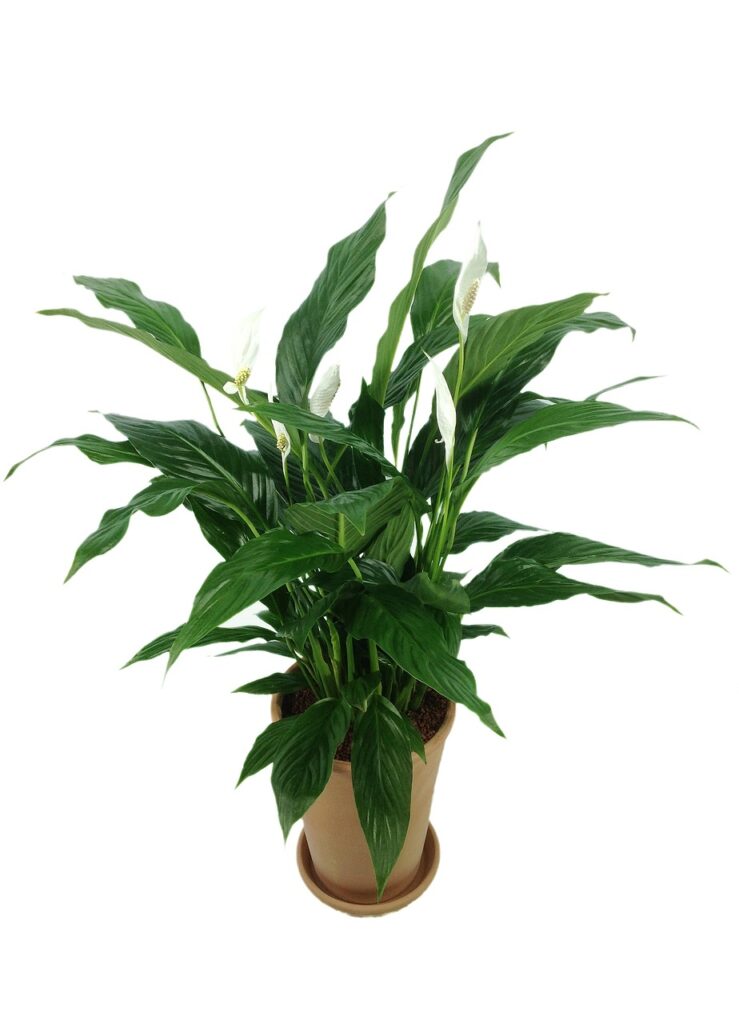
Presence of Allergens
Seasonal Allergens
Seasonal allergens such as pollen can greatly impact indoor air quality, leading to sneezing, coughing, and other allergic reactions. Consider an air purifier that is specifically designed to capture and eliminate pollen particles from the air. Additionally, keeping windows and doors closed during high pollen seasons can further minimize exposure.
Pet Allergens
If you have pets, it’s important to address the allergens they can introduce into your home. Pet dander, fur, and saliva can trigger allergic reactions in sensitive individuals. Look for an air purifier with a HEPA filter that can effectively capture and remove pet allergens from the air. Regular grooming and cleaning of your pets’ living spaces can also contribute to reducing allergen levels.
Dust Mites and Mold
Dust mites and mold are common indoor allergens that can affect your health and comfort. They often thrive in humid environments and can trigger allergies and respiratory issues. An air purifier with a HEPA filter can effectively capture dust mites and mold spores, reducing their presence in the air. Additionally, maintaining proper humidity levels and regular cleaning can help prevent the growth and proliferation of these allergens.
Type of Air Purifier
HEPA Filters
HEPA (High-Efficiency Particulate Air) filters are widely regarded as one of the most effective air purifier technologies. They can capture up to 99.97% of particles as small as 0.3 microns, including allergens, dust, and pet dander. HEPA filters are highly recommended for individuals with allergies or respiratory issues.
Activated Carbon Filters
Activated carbon filters are particularly effective at removing odors, chemicals, and volatile organic compounds (VOCs) from the air. They work by adsorbing these substances onto the surface of the carbon filter, thereby neutralizing them. Activated carbon filters are a great addition to air purifiers if you are concerned about odors or chemical pollutants.
Ionic Air Purifiers
Ionic air purifiers, also known as ionizers, release negative ions into the air. These ions attach to airborne pollutants, causing them to become heavy and fall to the ground or stick to surfaces. While they can effectively remove some pollutants from the air, they may generate small amounts of ozone, which can irritate the lungs. Ionizers should be used with caution, especially by individuals with respiratory conditions.
UV-C Light Purifiers
UV-C light purifiers utilize ultraviolet light to kill bacteria, viruses, and other microorganisms present in the air. They can be highly effective at neutralizing these harmful pathogens, contributing to cleaner and healthier air. UV-C light purifiers are often used in conjunction with other filtration systems to maximize their efficiency.
Ozone Generators
Ozone generators emit ozone gas to neutralize odors and kill bacteria and viruses. While effective at eliminating odors, ozone generators can be harmful when used in high concentrations and in enclosed spaces. It’s important to exercise caution and follow manufacturer guidelines when using ozone generators, as prolonged exposure to ozone can damage the lungs and exacerbate respiratory conditions.
General Guidelines
Continuous Operation
For optimal air purification, it’s generally recommended to run your air purifier continuously. This ensures that the air is constantly being cleaned, reducing the buildup of allergens and pollutants. Continuous operation is particularly important for individuals with allergies or respiratory conditions as it helps maintain a healthier indoor environment.
Intermittent Operation
If you prefer not to run your air purifier continuously, intermittent operation can still provide benefits. Running the air purifier for a few hours a day, especially during peak pollutant times, can help maintain good indoor air quality. Be mindful of the specific needs of your living space and adjust the operation of your air purifier accordingly.
Sleeping with an Air Purifier
Sleeping with an air purifier can greatly improve the quality of your sleep by ensuring a cleaner and healthier breathing environment. Place the air purifier in your bedroom and run it on a low or quiet setting to minimize noise disturbance while still enjoying the benefits of purified air. Ensure that the air purifier is appropriate for the room size and provides sufficient ACH for effective purification.
Room-specific Recommendations
Bedroom
In the bedroom, air quality is particularly important as it can impact sleep quality and overall wellness. Opt for a quiet air purifier with a HEPA filter to capture allergens such as dust mites, pollen, and pet dander. Consider additional features such as a night mode or sleep timer to minimize noise during the night.
Living Room
The living room is often a high-traffic area, making it prone to dust, allergens, and odors. Look for an air purifier with a wide coverage area to effectively clean the larger space. Activated carbon filters can help neutralize odors from cooking, pets, or smoke, ensuring a fresh and inviting living room environment.
Kitchen
The kitchen is an area where odors and airborne particles from cooking can be prevalent. Choose an air purifier with strong odor elimination capabilities, such as an activated carbon filter. Consider placing the air purifier near the cooking area to capture and remove cooking odors and pollutants effectively.
Office
Air quality in the office is crucial for productivity and overall well-being. Select an air purifier that can handle the square footage of your office space, taking into consideration any pollutants or allergens that may be present. A HEPA or activated carbon filter can help remove dust, particles, and odors often found in office environments.
Baby’s Nursery
Maintaining a clean and healthy environment in the baby’s nursery is essential for their well-being. Look for an air purifier with a HEPA filter and activated carbon filter to capture allergens, dust, and odors. Consider a quiet model with a night mode to ensure uninterrupted sleep for both you and your baby.
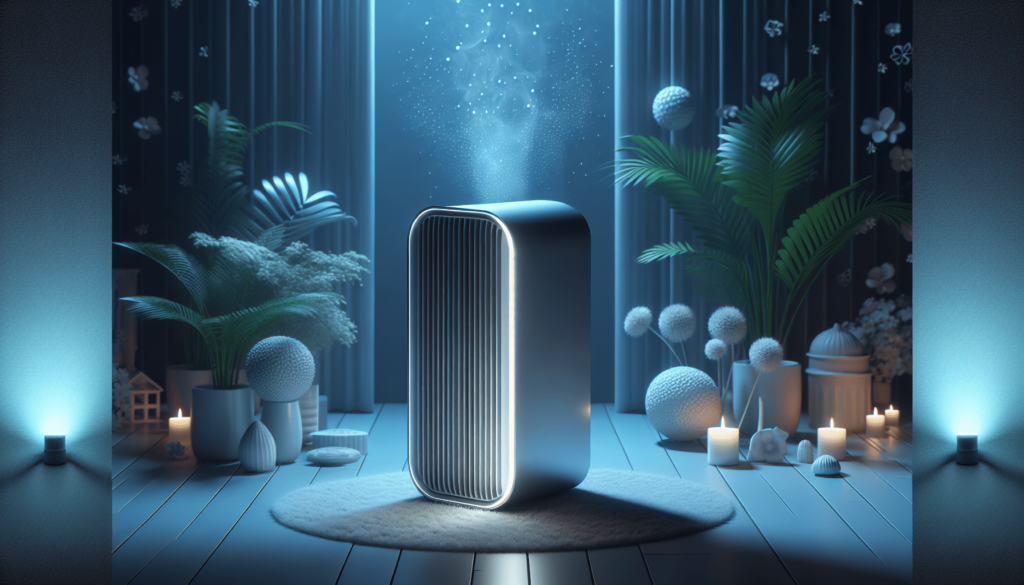
Additional Tips
Keep Doors and Windows Closed
To maximize the effectiveness of your air purifier, it’s important to keep doors and windows closed as much as possible. This helps prevent outdoor pollutants, allergens, and dust from entering your home and allows the air purifier to focus on purifying the indoor air more effectively.
Regular Maintenance and Filter Replacement
Regular maintenance and filter replacement are crucial for the optimal performance of your air purifier. Follow the manufacturer’s instructions for cleaning and maintaining the unit, and replace the filters as recommended. Neglecting maintenance can reduce the efficiency of the air purifier and compromise the quality of the air in your home.
Consulting the Manufacturer’s Instructions
When setting up and operating your air purifier, it’s important to consult the manufacturer’s instructions. Each air purifier may have specific requirements and recommendations for optimal performance. Following these instructions will ensure that you get the most out of your air purifier and maintain a healthier indoor environment.
Air Purifier Usage during COVID-19
During the ongoing COVID-19 pandemic, air purifiers can provide an extra layer of protection by helping to remove airborne particles, including viruses. While they are not a substitute for other preventive measures such as wearing masks and practicing good hygiene, air purifiers with HEPA filters and UV-C light purifiers can help reduce the transmission of viruses indoors.
Conclusion
Finding the right air purifier for your needs requires careful consideration of various factors. By evaluating the size of the room, the quality of indoor air, your health conditions, the presence of allergens, and the type of air purifier, you can make an informed decision. Remember to take into account the specific requirements of each room and follow the general guidelines for continuous or intermittent operation. By investing in a suitable air purifier, you can create a healthier and more comfortable environment for yourself and your loved ones, adapting to changing conditions and ensuring a breath of fresh air every day.
